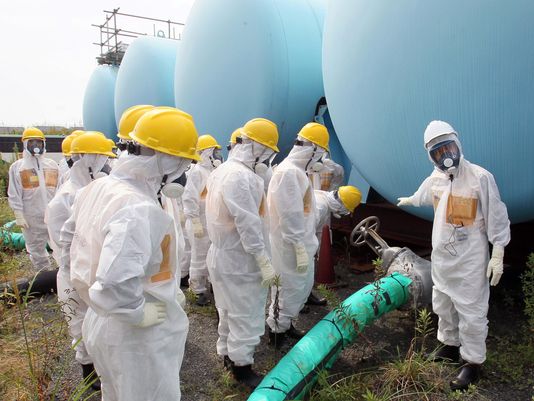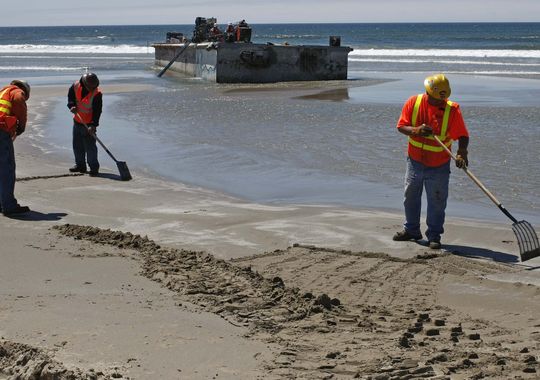
But Buesseler and other scientists are calling for more monitoring. No federal agency currently samples Pacific Coast seawater for radiation, he said."I'm not trying to be alarmist," Buesseler said. "We can make predictions, we can do models. But unless you have results, how will we know it's safe?"
The news comes three years after the devastating Japan tsunami and resulting nuclear accident.On March 11, 2011, a 9.0 magnitude earthquake hit off the coast of Japan, triggering a tsunami with waves as high as 133 feet. More than 15,000 people died and about 6,000 were injured.
The earthquake and tsunami knocked out power to cooling pumps at the Fukushima Daiichi nuclear power plant complex, causing meltdowns at three reactors.
Last July, Tokyo Electric Power Co., which operates the plant, acknowledged for the first time that the reactor was leaking contaminated underground water into the ocean.
Since then, the news has gotten worse, and there is widespread suspicion that the problem is underreported.
There are three competing models of the Fukushima radiation plume, differing in amount and timing. But all predict that the plume will reach the West Coast this summer, and the most commonly cited one estimates an April arrival, Buesseler said.
A report presented last week at a conference of the American Geophysical Union's Ocean Sciences Section showed that some Cesium 134 has already has arrived in Canada, in the Gulf of Alaska area.
Cesium 134 serves as a fingerprint for Fukushima, Buesseler said.
"The models show it will reach north of Seattle first, then move down the coast," Buesseler said.
By the time it gets here, the material will be so diluted as to be almost negligible, the models predict. Radiation also decays. Cesium 134, for example, has a half-life of two years, meaning it will have half its original intensity after that period.

The monitoring began in April 2012, when tsunami debris began arriving along the Oregon coast. So far, all of the tests have shown less than "minimum detectable activity," or the least amount that can be measured.
Results of the most recent samples, taken in mid-February, won't be available until mid-March, Oregon Health Authority spokesman Jonathan Modie said.
Washington does not test ocean water for radiation.
"We have none happening now and we have none planned," said Tim Church, communications director for the Washington State Department of Health. "Typically that would be something that would happen on the federal level."
California regularly samples seawater around the state's nuclear power plants to determine whether the plants are impacting the environment. Those results all are below minimum detectable activity.
Some citizens and scientists are taking sampling into their own hands.
Cal State Long Beach marine biologist Steven Manley has launched "Kelp Watch 2014," which will partner with other organizations to monitor kelp all along the West Coast for Fukushima radiation.
And Buesseler recently offered the services of his lab at Woods Hole in Massachusetts.
His project - titled "How Radioactive Is Our Ocean?" - will use crowd-sourced money and volunteers to collect water samples along the Pacific Coast, then ship them across the country to be analyzed.
So far, results are in for two locations in Washington and three in California. They show that the plume has not yet reached the coast.
Meanwhile, West Coast states are winding down their tsunami debris response efforts.
Oregon's coastline is seeing less debris from the tsunami this winter than in the past two years, Oregon State Parks spokesman Chris Havel said.
If that doesn't change, officials likely will disband a task force that was mobilized to deal with the debris.
Last year, Washington suspended its marine debris reporting hotline.



[Link]